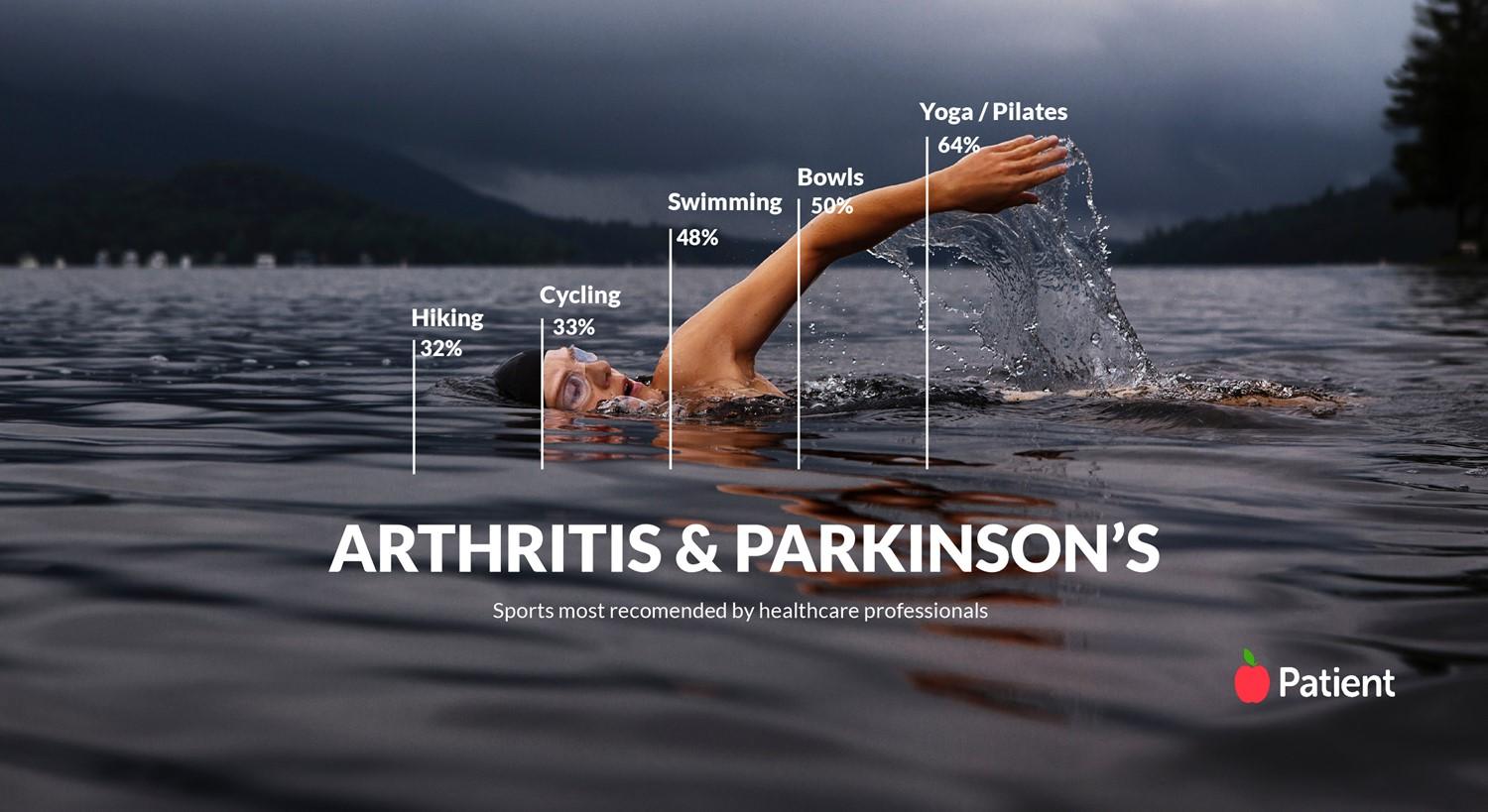
The best exercises to try if you have arthritis
Peer reviewed by Dr Sarah Jarvis MBE, FRCGPLast updated by Abi MillarLast updated 26 Jan 2018
Meets Patient’s editorial guidelines
- DownloadDownload
- Share
- Language
- Discussion
While embarking on an exercise programme can seem daunting for anyone, that may ring particularly true for people with arthritis. If you’re living with fatigue, pain and stiffness, you may be scared that physical activity will exacerbate your symptoms or damage your joints.
However, establishing an appropriate exercise routine is actually one of the best things you can do. It can help you manage your pain better, boost your energy levels, lessen fatigue and improve psychological well-being. On top of this, it can help you achieve and maintain a healthy weight, putting less strain on your joints.
In this article:
Continue reading below
Our survey said
Of course, it is important to be selective about which forms of exercise are right for you. In Patient's recent survey of 281 healthcare professionals, doctors were more likely to recommend low-impact activities for arthritis than more vigorous forms of exercise.
The leading activity was yoga and Pilates (recommended by 64% of doctors) followed by bowls and pétanque (recommended by 50%) and swimming/snorkelling/diving (49%). At the other end of the spectrum, the least recommended sports were skateboarding (6%), hockey (5%) and rugby (4%).
We asked healthcare professionals which are the best sports for arthritis

Stretch and strength
"Those with arthritis can benefit from a combination of gentle stretching, strengthening and aerobic exercise. Examples of suitable aerobic exercise are walking, swimming and cycling. Other low-impact activities, such as doing the housework or some gardening, can also count as aerobic exercise," says Wendy Davies, from the information team at Arthritis Care.
She adds that those with rheumatoid arthritis, for instance, should be encouraged to incorporate aerobic and resistance/strengthening exercises into their routine care. This can help to reverse cachexia (loss of muscle mass) and improve muscle function without making the condition worse.
However, if you haven't exercised for a while, it's important to start slowly and gradually build up how much physical activity you do. It's crucial never to force a painful joint, and to stop immediately any time an exercise gives you a sharp pain.
"Many high-impact, contact sports are unsuitable for those with arthritis, particularly ones that entail jerky movements," says Wendy Davies. "Therefore, it's no surprise that skateboarding, hockey and rugby were the least recommended sports."
Continue reading below
Low-impact activities
Yoga and Pilates, which topped the poll, are highly suitable for many people with arthritis - not only are they low-impact and gentle, but they help to strengthen muscles, which support the joints. It’s important to find a teacher who understands arthritis and can adapt the movements or poses for individual needs. Check with your doctor or physiotherapist first to find out if there are any particular movements to avoid.
"Pilates is great for arthritis because it doesn't put any stress or strain on your joints - they are not forced into awkward positions," says Lynne Robinson, founder and director of Body Control Pilates and author of The Pilates Bible and Pilates for Life. "Instead we teach you how to align your joints before you start and then you keep this good alignment while you perform the exercises. Gently, and with control, you mobilise your joints helping improve range of motion. Many teachers also have government-accredited certificates in teaching older clients, which would include tailoring the movements for common conditions such as arthritis and Parkinson's."
Wendy Davies adds that it is no surprise to see so many doctors recommending bowls/pétanque and swimming.
"These are also ideal for many people with arthritis, being low-impact activities," she says. "Aqua aerobics can also benefit those with various types of arthritis; the advantage of doing an aerobics class in water is that, unlike on land, there is significantly less stress on joints. If swimming, avoid breaststroke if you have arthritis in your hips or knees, as it can strain them."
Another useful precaution is to check that venues, and their facilities, are accessible, and to inform instructors that you have arthritis first. Although it's crucial to work within your limits, doing some form of exercise on a regular basis can make a huge difference to your quality of life.
Patient picks for Arthritis

Bones, joints and muscles
What can you do to help prevent arthritis?
Arthritis can affect young and old people, but your best chances of avoiding arthritis is when you are healthy, mobile, and pain-free. There's no sure way to prevent arthritis, but you do have some control over your joint health.
by Victoria Raw

Bones, joints and muscles
What foods are good for arthritis?
What we eat can help to relieve the symptoms of many health conditions, including arthritis. Although there is no miracle diet for arthritis, certain foods can help fight inflammation and support your joint health, such as fatty fish, fruit, vegetables, and nuts.
by Lynn Stephen
Continue reading below
Article history
The information on this page is peer reviewed by qualified clinicians.
26 Jan 2018 | Latest version

Ask, share, connect.
Browse discussions, ask questions, and share experiences across hundreds of health topics.

Feeling unwell?
Assess your symptoms online for free